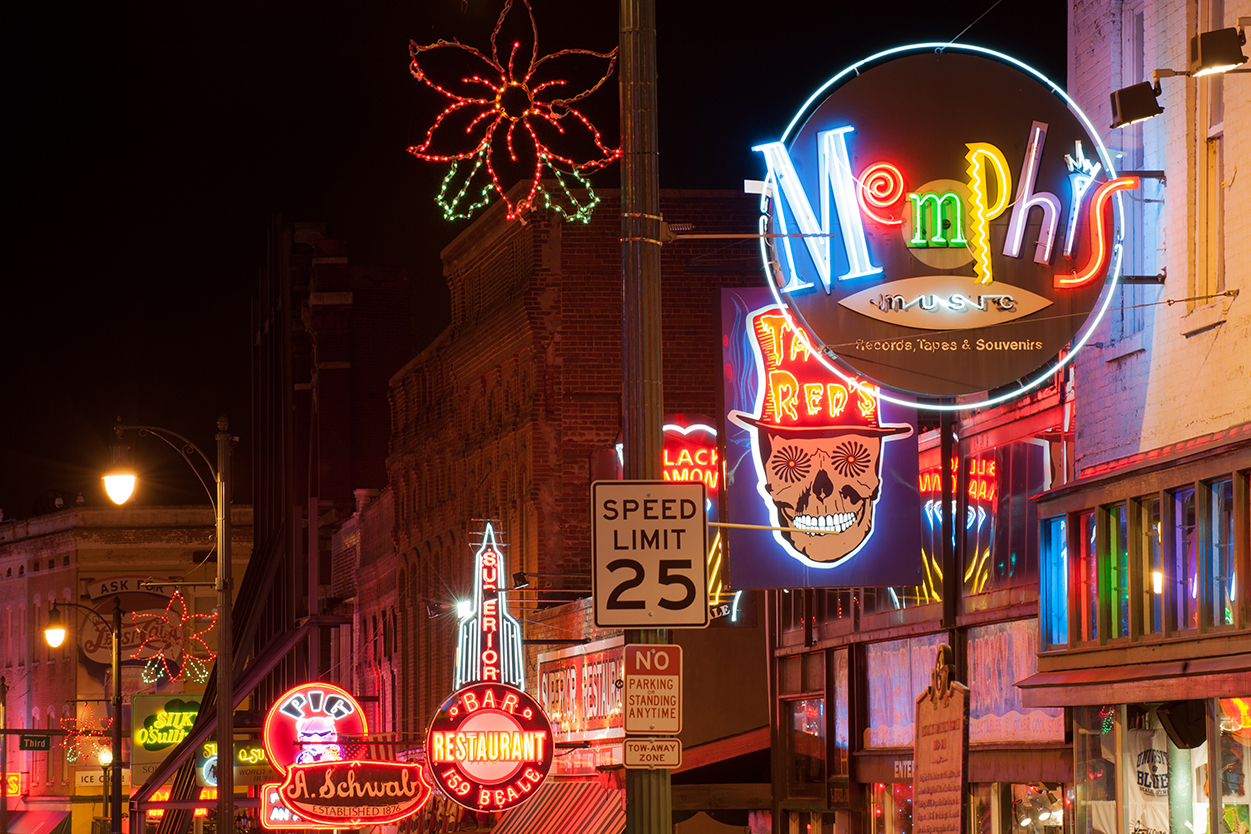Just Back From... a Music-Themed Drive Through Tennessee
Great local meal... Brunch at Flapjacks Pancake Cabin in Pigeon Forge: wild mountain blueberry pancakes, flaky buttermilk biscuits, and water served in mason jars. [PHOTO] After our hearty meal—at less than $10 a person—we were in Great Smoky Mountain heaven.
Our favorite part... The free Sunday-night songwriters' showcase at The Bluebird Cafe in Nashville. [PHOTO] It's located unexpectedly in a strip mall far from downtown Nashville but has jump-started the careers of musicians like Garth Brooks and Kenny Chesney. Two of my friends, Adrian Hardkor and Ken Francis Wenzel, were playing their second show while we were in town, and we brought along my Betsey Johnson associates to cheer them on. It's a place where people go to appreciate the music, not to chat (T-shirts sold with the Bluebird logo on the front read "shhhhh" on the back).
What we should have packed... Heavy-duty sunscreen. It was hotter than Hades in the shade in Tennessee—100 degrees every day. What we shouldn't have packed? Our Nashville guidebook. We never used it. Everything we needed was either a happy discovery or on my iPhone.
Total rip-off... While we loved Dollywood, at $55 apiece plus $8 for parking, it was too pricey for what we got. We spent most of the day walking around trying to find rides. They were very spaced out, and the park maps only seemed to be located at the entrance.
Fun surprise... In Lebanon, we stopped for lunch at Uncle Pete's Super Truck Stop and Restaurant—and who should saunter over to our booth and sit down next to me but Uncle Pete! He told us about his signed photos of country music stars and how Dolly Parton once stopped in during a snowstorm and stayed to sign autographs. Uncle Pete owns over 4,000 mugs, including ones for every state and 40 countries. [PHOTO] He broke the world record in 2000 for the largest mug collection and has drunk out of each one.
Best purchases... The $3 guitar-shaped flyswatter I got at Ernest Tubb Record Shop [PHOTO] and the cowboy boots Brenda found at Boots 'N' More on Broadway in Nashville. At Boots 'N' More, we spotted a cardboard box lying on the ground filled with sadly neglected shoes and labeled "everything in this box $20." Brenda came away with a pair of cute, cream-and-pink low-top cowboy boots that were originally $179.
Overrated... Beale Street. The street musicians were fantastic, [PHOTO] but it was very touristy. The shops all carried the same overpriced Memphis memorabilia, and the police barricaded the end of the street off and carded everyone who walked through. We felt like we were on spring break in Miami, but without the beach.
Worth every penny... The Drive-By Truckers concert, part of Knoxville's Sundown in the City outdoor concert series. [PHOTO] It was free, but I would pay money to see this band! They play southern rock with a twang. Market Square was set up with tents lining the park. We saw people leaning out of the shop and bar windows that overlooked the stage. At dusk, a crowd was dancing on the rooftops. We were front and center and got a good view of an older fan wearing a hat made out of a PBR box [PHOTO] and a girl sitting on her boyfriend's shoulders who flashed the band to the applause of the crowd. It was a "Did that really just happen?" moment.
Hotel we liked... The fabulously quirky Hotel St. Oliver in Knoxville. [PHOTO] You take a leather-clad elevator upstairs, where a real metal key lets you in (after a few sticky tries). The rooms are filled with antiques, old framed photos, and a surprise at every turn. We loved the sculpture of a metal eagle on the claw-foot table at the end of the bed and the sepia-toned photos in the bathroom. I felt like I had stepped into the Professor's house in The Lion, the Witch and the Wardrobe and would discover a wardrobe with Narnia hidden behind some musty, fur coats. The view from the window looked out on Market Square, so we could watch the bands getting ready for sound check.







